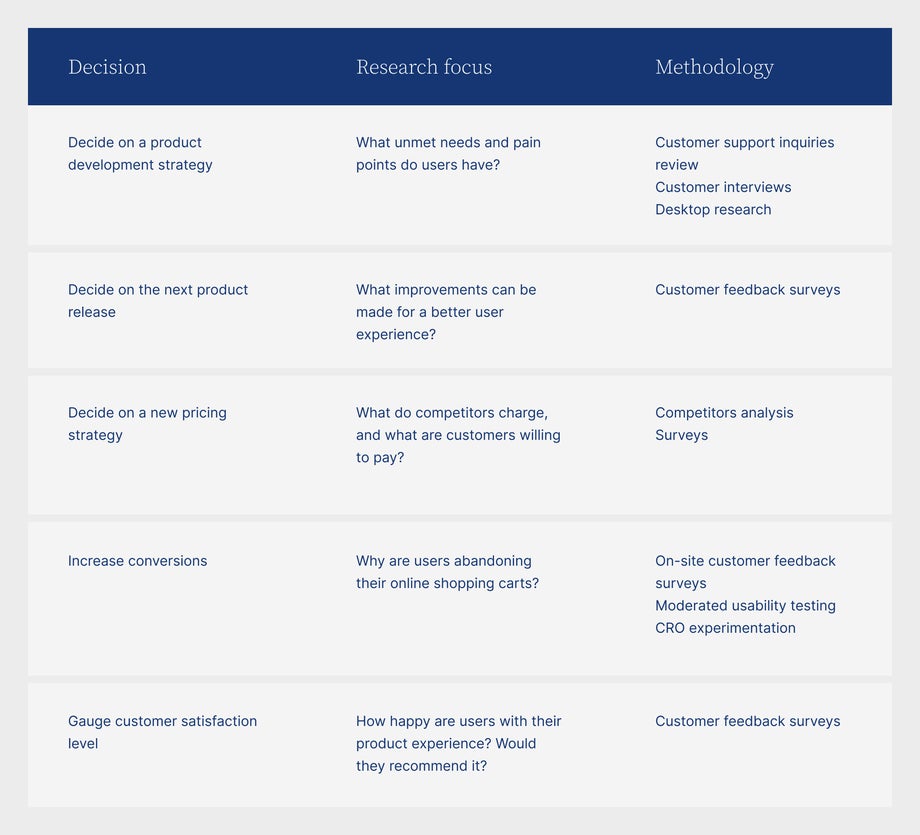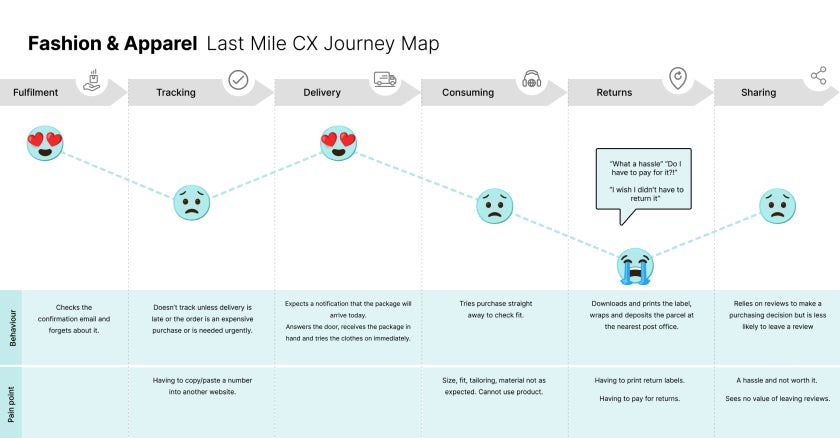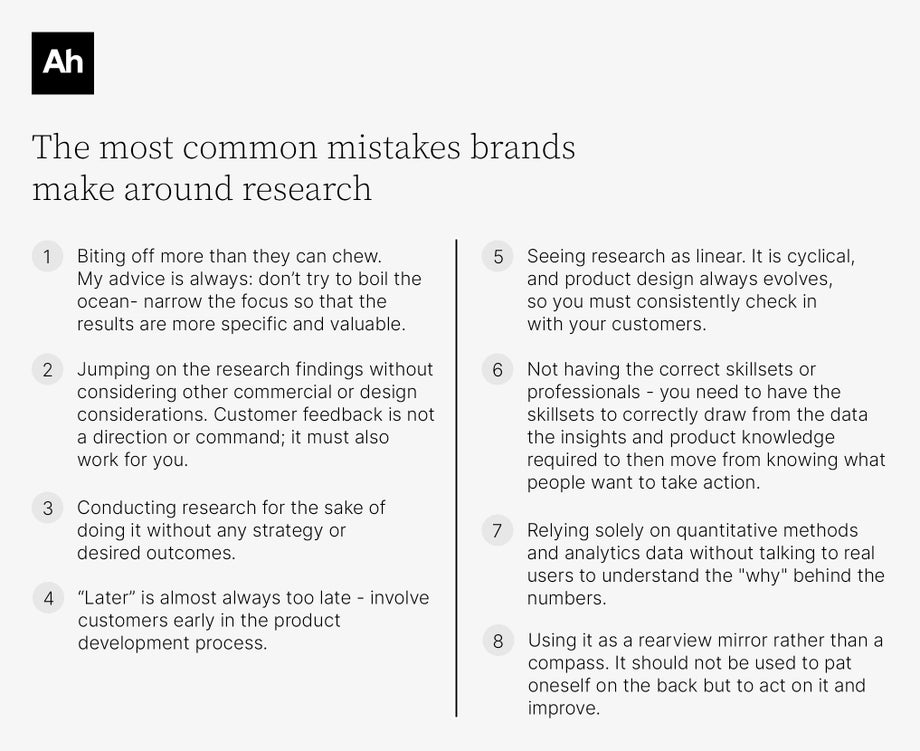

16.01.20246 mins read
Customer experience (CX) is arguably the most critical differentiator for brands today. With the current cost of living increases and economic uncertainty, people are getting more selective with where and with whom they spend their money. Typically, price and quality are very structured, leaving little room for influence. CX, however, offers incredible opportunities. As a result, the CX delivered will determine the winners and losers on the retail battleground.
One of the keys to great CX is understanding as much as possible about the people who use or could use your product/service. This means knowing more than just their current shopping habits; it means also deeply understanding the role your product plays in people's lives and what are the areas of opportunity and improvement.
The main challenge is how to get your hands on such insights. What is the best way to undercover and analyse this information rather than simply making assumptions based on brand bias or leadership hunches?
The solution is research. It is investing time and money into gathering the data that you can then use to make informed, data-backed decisions. However, research is a broad term with multiple implications and interpretations.
Before we explore the value and benefits of research, let’s first look at some key research essentials.
For business purposes, typically, there are 3 subjects and 3 types of research.

As shown above, research is a broad term. Therefore the correct type of research must be conducted to have the best outcome.
Having worked in research, I often see people mentioning (and using) market and user research interchangeably.
They are, in fact, two very different areas.
Market research is like looking at a big map to find where people live and what they like buying. User research is like knocking on specific doors in those cities to talk to people directly and watch them use a certain product. It helps to understand every individual’s needs, learning why they buy a certain product and how they use it.
Imagine you want to design a new car. Market research tells you which cities need cars, while user research tells you what features and comforts people want inside the vehicle. It's important to distinguish them because combining both ensures you create a car that sells well and also satisfies customers.
“Combining both market and user research ensures you build a car that sells and satisfies customers.”
But it is also essential for the business to know the difference because you want to be sure that you are requesting the correct information you need to make your decision.
Customer research gauges customer satisfaction with a brand or product and uncovers factors that contribute to brand loyalty. But, if you consider the customer a complete entity, they are so much more than that. In truth, the customer is the buyer studied by market research and the user studied by user research.
Customer research is like combining market and user research. It's about studying the map, talking to people, and even driving around to see how they behave daily. Customer research examines the big picture and individual experiences to help businesses make better decisions.
The purpose is to understand what customers need, how they behave, and what they like or dislike. It guides businesses in creating products or services that meet customer expectations.
Begin by defining clear goals for your research. Determine the decision you must make and what information you need to come to that decision.
For example:

Establish how you will gather your information.
There are 2 ways:
#1 Primary research - collect data directly from customers- internally or through an agency
#2 Secondary research - collect the data from completing desktop research.
The information you want to gather will determine which option you choose. My rule is don’t research just for the sake of it; if the data already exists, then use it. Sometimes, desktop research is sufficient for what you want to do. However, sometimes, it isn’t and can’t offer the value that talking to your customers can.
“Don’t conduct research just for the sake of it.”
Primary research is the kind of research we do here at All human.
If you go ahead with option 1, then you will have to decide on methodology and approach:
UX research methods answer a wide range of questions. You will most likely need the help of a specialist researcher here, but broadly speaking, there are 3 dimensions:
- Attitudinal (what people say) vs. behavioural (what people do).
- Qualitative (why and how to solve it) vs. quantitative (how many/how much).
- Context of use (phase of the product development process).

As illustrated above, each method is assigned according to the intended outcome. This is why it is so important to formulate precise research questions at the beginning of the project, as they determine all of the other phases.
“User research is only as effective as the questions you ask.”
This is what it will look like when applied to the earlier example of the kinds of questions brands will want to research.

Think of it like cooking a meal. Once you've gathered the ingredients (data), you analyze them to see what flavours (insights) emerge. Then, you use these insights to create a tasty dish (action plan) that satisfies your customers.
At All human, we believe that the research is as effective as the quality of our communication about it, therefore, we typically will present the findings in the form of high-quality presentations with storytelling and data visualisation techniques. If we are under time constraints, we’ll go for a more agile approach, and our designers will implement the changes as we learn from the research. This can be very beneficial to clients as it means they are seeing the impact and, ideally, positive outcomes very quickly.
“Your research is only as effective as the quality of your communication about it.”

Gathering and interpreting the data is just one part of the process. The second part is taking the insights gleaned and applying them. This is where you can realise the actual value and potential of research. It’s also where you will need the professionals and the people with the necessary skills to implement the actions. For example, designers can take the learning and incorporate them into website design, or the design of a product or app.
There are lots- which is good. One of the better-known examples is Netflix. In the competitive streaming world, Netflix was facing a huge challenge: keeping and gaining subscribers. Through user research, they discovered that viewers were feeling overwhelmed by content choices and wanted the content to be curated with recommendations based on their preferences. Netflix revamped its interface, adding features such as Candela, top picks for you and improved search, resulting in better retention, higher engagement, and increased revenue.

Proper research, which offers the most commercial value, is done consistently and focuses on understanding and meeting customer needs as the core of everything. This should not be confused with occasionally surveying customers to confirm your ideas and impress colleagues with an "I told you so" moment. That isn't actual consumer research; it's called confirmation bias and is not beneficial to your business.

Get your copy of The last mile: the role of digital innovation in reshaping the delivery experience.


